This post may contain affiliate links. If you use these links to buy something we may earn a commission. Thanks.
With the right plant selection, you can still get good fruit harvests by growing fruit in shadier spaces.
In a food forest, fruit trees are primarily found in the “understory” category as they benefit from the protection of overstory trees. Overstory trees produce dappled and partial shade environments.
So shade-tolerant fruit trees aren’t rare! But the more shade you give a fruiting plant, the less prolifically they may fruit.
We personally forage fruit that grows in full woodland shade, and we even grow some fruit trees and shrubs in dappled shade successfully—in a cold climate.
Several long-distance friends, who live in the tropics, also grow abundant fruit in the shade! So I’ve included tropical fruit trees in this list too.
Further down, you’ll also find a comprehensive list of berries that grow in full shade. Many of which we forage for, and others we wish we had!
Contents:
- 10 Best Fruit Trees for Partial Shade
- 7 Best Shade-Loving Tropical Fruit Trees
- 12 Best Fruit Bushes To Grow in Shade
- 12 Best Berries to Grow in Full Shade
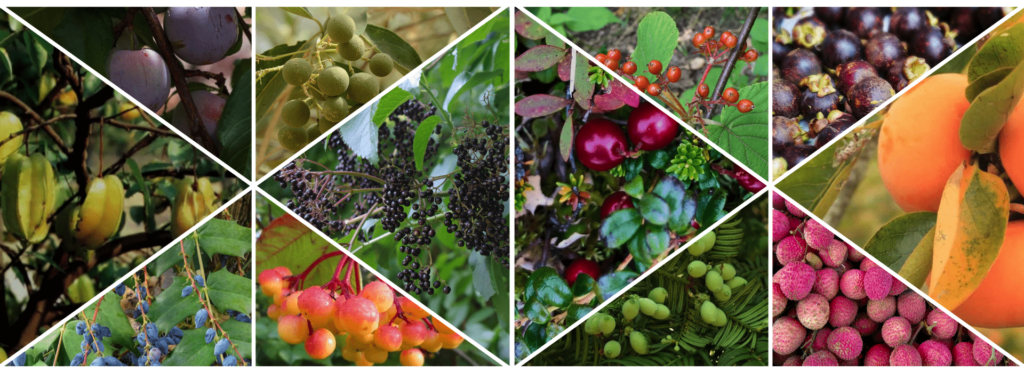
Related: 19 Tasty Fruiting (Low-Growing) Ground Covers
While many common and abundant fruiting plants need some sunlight, many can tolerate partial and dappled shade, even in cold climates.
You’ll also discover unique fruiting plants for moderate and full shade by scrolling through this post.
What’s even better is you’ll only need to plant them once and they’ll produce every year for decades. Just plant the correct ones for your zone!
It doesn’t matter if you’re in zone 2, zone 12, or any in between—you’ll find all the best shade-growing fruit in this post!
I titled this “any” shade because I’ll be providing you options for all shade types to ensure you find what you’re looking for.
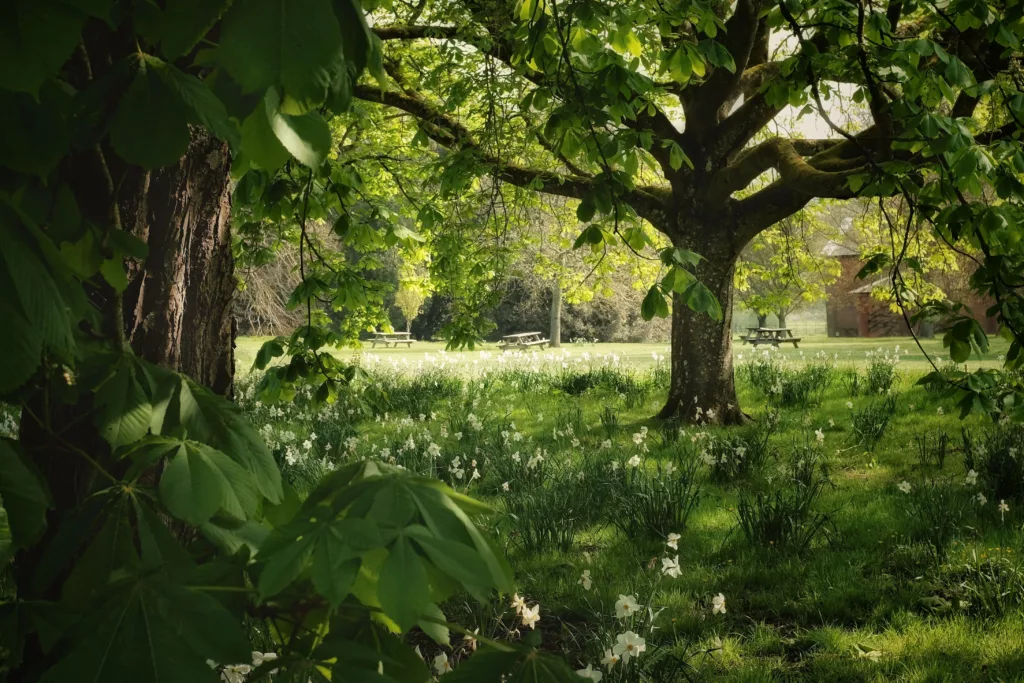
Since not all fruits will grow or produce in the shade, here are the best options to choose from (that do enjoy a break from the sun).
To make the most fruit out of your shaded areas, stick with the options in this post.
Related: 18 Ground Cover Herbs for Full Shade & Part Shade
Bonus fruit #1: mushrooms! Mushrooms are the easiest fruit to grow in the shade and you have a wide variety of options. See: Grow a Mushroom Garden at Home in 4 Steps
10 Best Fruit Trees for Partial Shade
Several delicious fruit trees will grow happily in partial shade. Some may produce a little less, but you’ll still reap plenty of ripe fruit!
We are personally growing pawpaw, plum, pear, peach, and cherry trees in both partial-shade and dapple-shaded areas.
Keep in mind: that while the plants here can produce fruit in the shade, you’ll still want to provide them with as much sunlight as possible within the given limitations. More sun means more fruit and since they’re planted permanently for years of production, you’ll want to set them up for the best possible success.
The best fruit trees for semi-shaded spaces are:
- Pawpaw
- Quince
- Persimmon
- Mulberry
- Damson
- Nannyberry
- Peach
- Chokecherry
- Plum
- Pear
Each fruit tree may require more or less partial shade. For example, plum and pear trees need a minimum of 6 hours of sunlight to produce and ripen good fruit, but pawpaws natively enjoy a dappled understory.
Pawpaw (Asimina triloba) zones 5-8
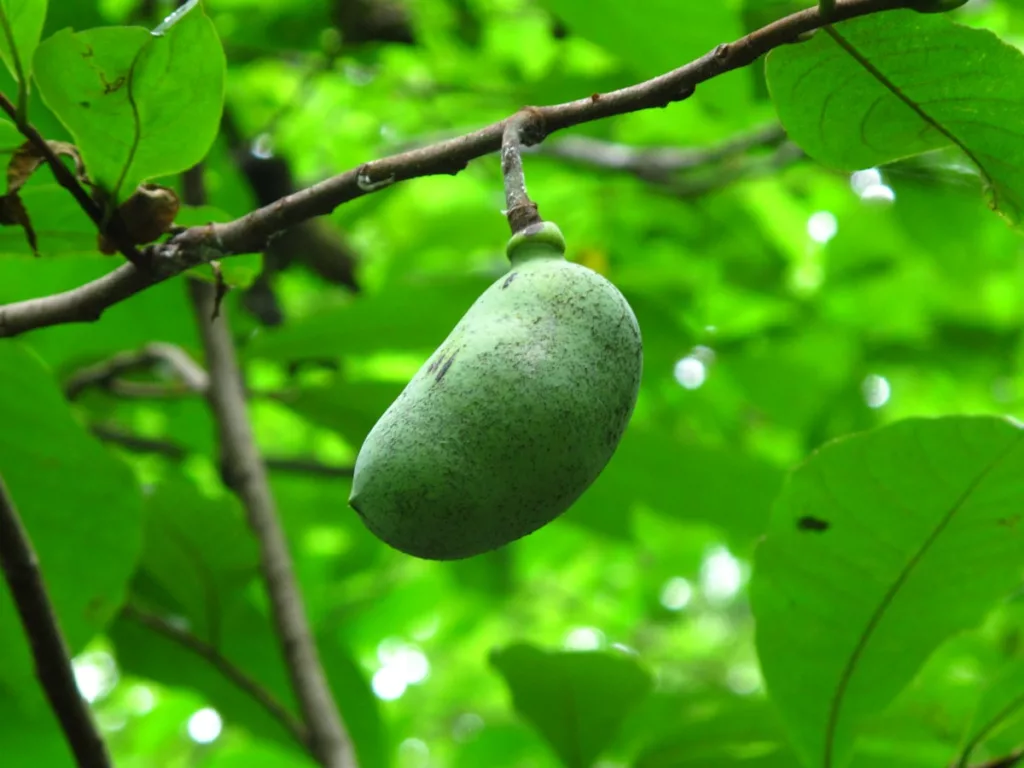
Pawpaw trees natively grow in the forest understory so they are a great choice for moderate shade, dappled shade, or partially shaded spaces.
We have a baby pawpaw tree, that we started from seed, happily growing its second year in our hardwood understory. It receives dappled light equivalent to moderate shade.
It will take 7 years before we see fruit but we know of many people with fruiting pawpaws in the shade.
We had 7 grown from seed, but unfortunately only one made it, so we are still at ground zero for getting fruit. You’ll need one male and female pawpaw tree, and 7 years of patience to get fruit!
The good thing is they will look gorgeous in the meantime. Their foliage provides tropical vibes for coldish climates.
To get a male and female, you’ll need a seller who is generous with seeds. Grow at least 7 seeds and identify a male and female when they flower. Keep and establish at least one of each.
Quince (Cydonia oblonga) zones 5-9
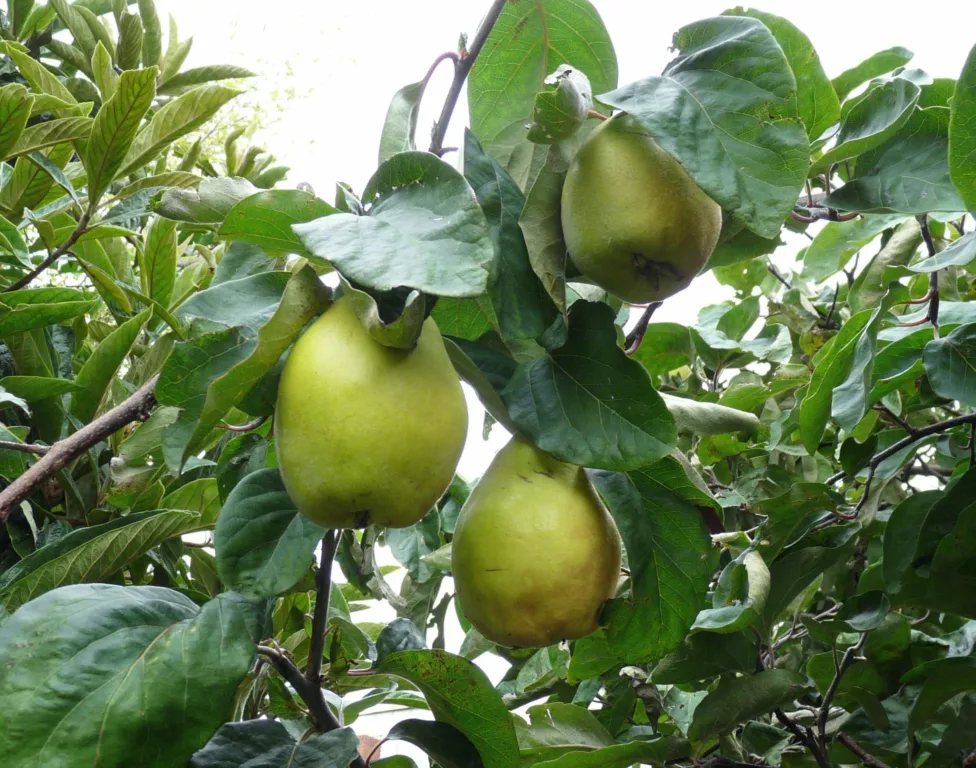
In sunny conditions, quince is known to be fast-growing and heavy on the flowers. While it thrives with light, it tolerates shade.
In shade, growers report slower growth and less fruit. But less fruit on a tree like this is still plenty to go around for a family.
If you’re afraid to grow anything difficult, quince is known to be an easy grower that grows well in various soils. If you can’t find any for sale at your local nurseries, this Etsy shop sells a pack of 20 seeds.
Persimmon (Diospyros virginiana) zones 4-9

Persimmons prefer shelter from the early morning sun, so if this is the shade you have it might be a good pick for you. Persimmons are a bit more on the sensitive side and the Royal Horticultural Society advises that early morning sun causes frost damage to plants if they thaw too quickly.
Female persimmons are highly productive even without a male. They produce seedless fruit that may be more or less tasty without a male in range.
If you’ve never tasted or heard of a persimmon this video hosts plenty of information and insightful comments.
Mulberry (Morus alba) zones 5-10
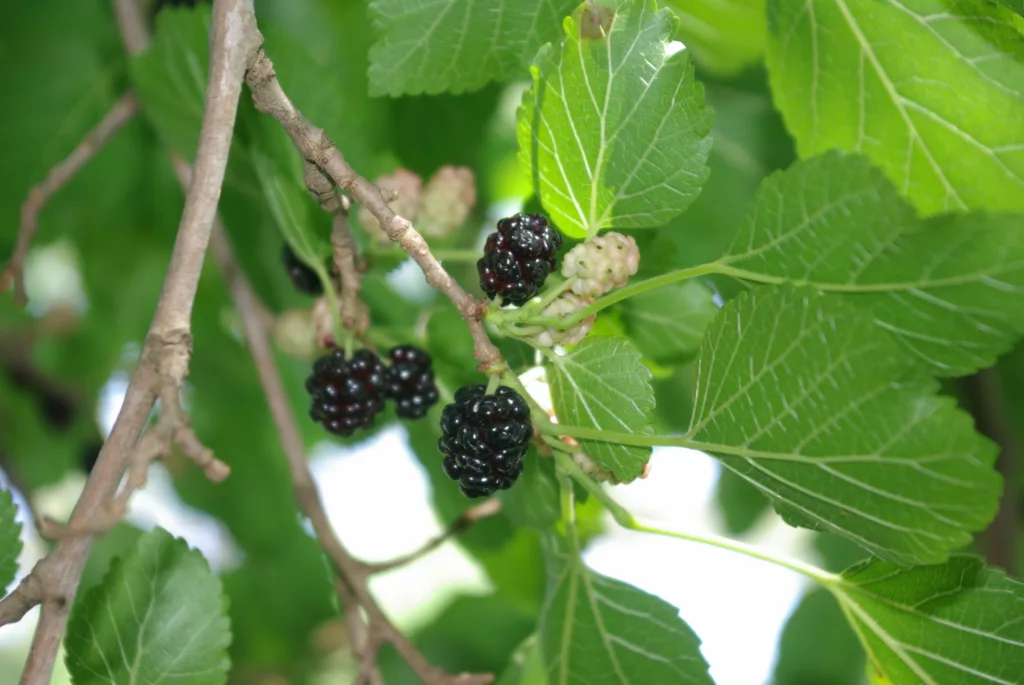
Mulberries are versatile trees. Easy to grow as they’ll still perform in winds, cold temperatures, droughts, and partial shade. Anything with drought tolerance and planted in the shade will need very little water once established.
Not only do mulberry growers agree, but the Journal of Pharmacognosy and Phytochemistry also describes mulberries as “a tree that requires so little attention and care.”
A low-maintenance abundant-fruiter.
Mulberry fruits are like elongated blackberries. This Etsy shop currently sells a pack of 200 white mulberry seeds, but you may also search around for live tree cuttings either on Etsy or locally.
Damson (Prunus domestica subsp. insititia) zones 5-7
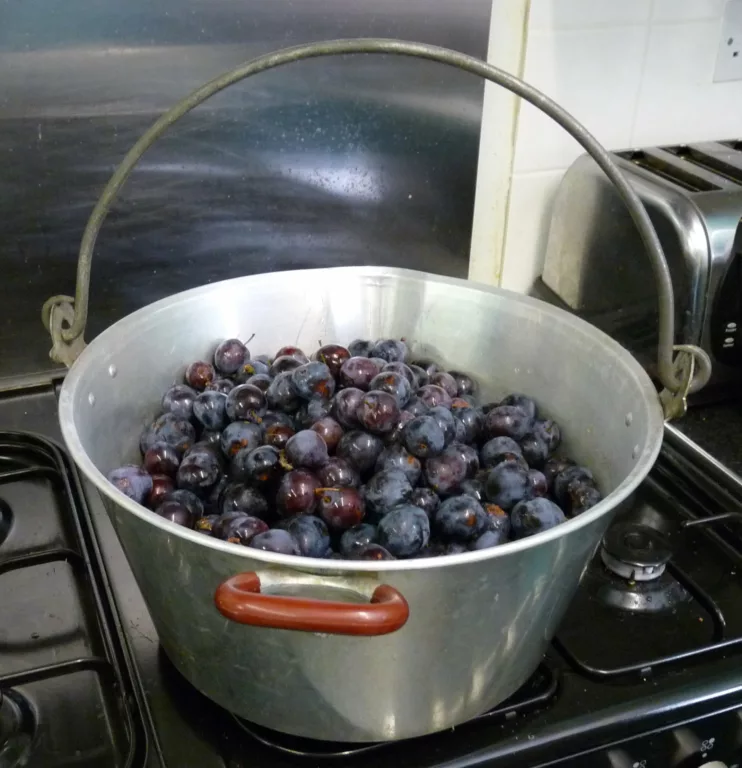
Damsons are very similar to plums, except their fruit is longer in shape and isn’t as desirable for raw eating. Damsons are most often used in jams or cooking.
As shade is tolerated, so are heavy winds and various soil types.
They even make the list for growing well on north-facing walls, according to “Gardening on Walls” by Grey-Wilson. C. & Matthews. V.
If your local nurseries don’t carry damson trees, seeds aren’t expensive. This Etsy seller provides 15 seeds for under $5.
Nannyberry (Viburnum lentago) zones 2-7
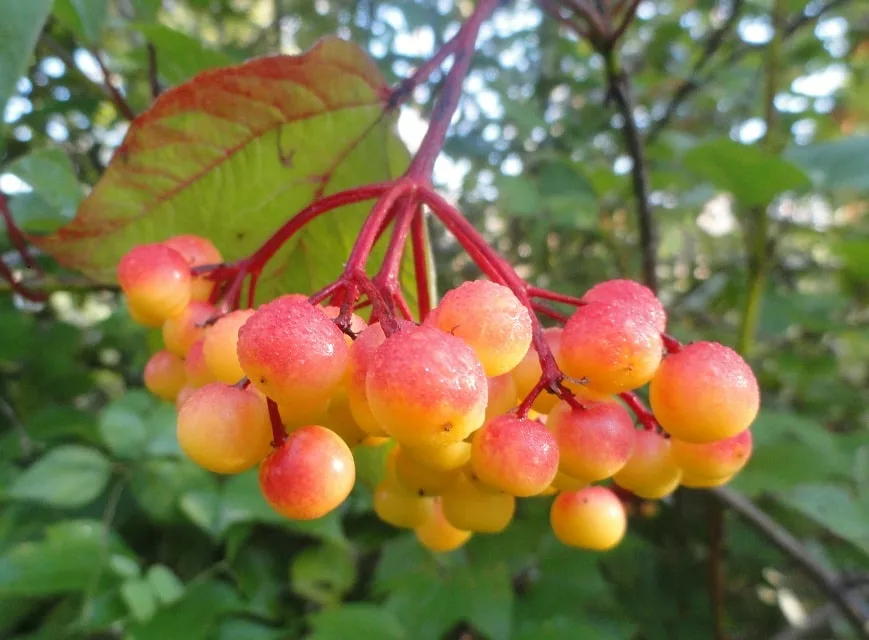
Nannyberries can be found natively growing along streams and forest borders of North America.
The fruit is edible both raw or cooked, while we haven’t personally planted any we have seen and tasted wild berries. Sweet and juicy! Most look-alikes of this fruiting tree also have edible fruit, but be sure of identification to avoid getting sick from the wrong plant!
To obtain this plant you can forage seeds or cuttings yourself, or order from this Etsy shop for convenience and certainty.
Related: 11 Best Zone 4 & 5 Ground Covers for Shade (with Photos)
Peach (Prunus persica) zones 4-10
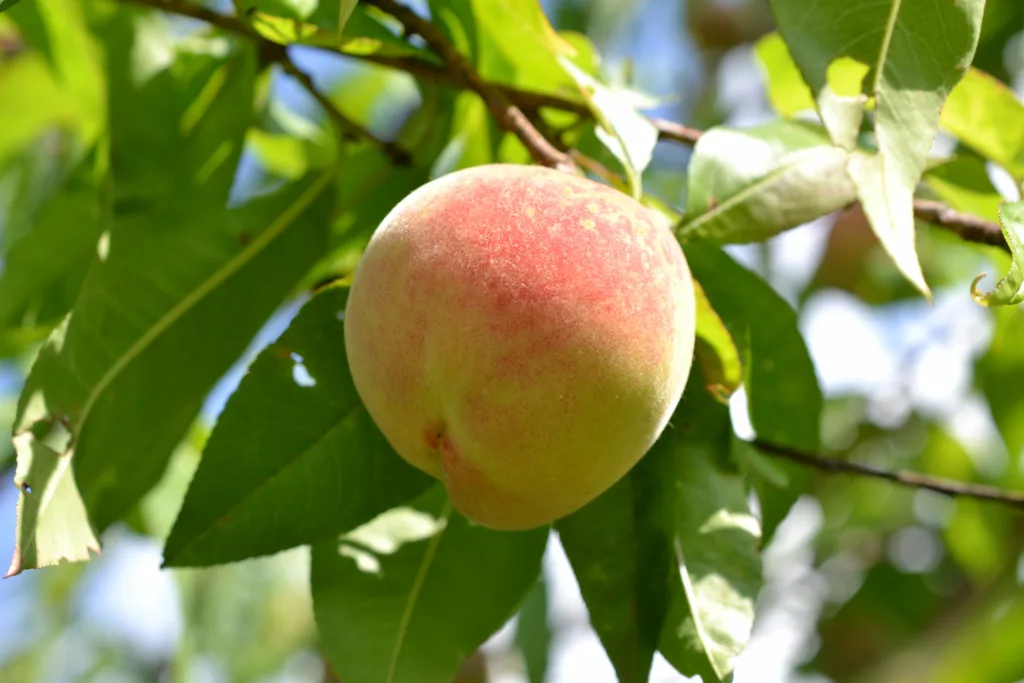
Our peach trees are situated under a mix of 80-foot-tall hardwood trees. They get partial sun and dappled light through the hottest part of the day.
4-6 hours of sun are adequate for peach trees.
Freshly planted young peach trees seem to do really well with light shade in comparison to a full sun spot.
Somewhere along the line, permaculture taught us that young fruit trees are to be planted with pioneers. The pioneers would protect the trees while young and eventually come down to open new sunlight when the tree reaches fruit bearing age.
If this isn’t an option in your shade situation, then ensure the spot in question has at least 4-6 hours of direct sunlight.
Chokecherry (Prunus virginiana) zones 2-7
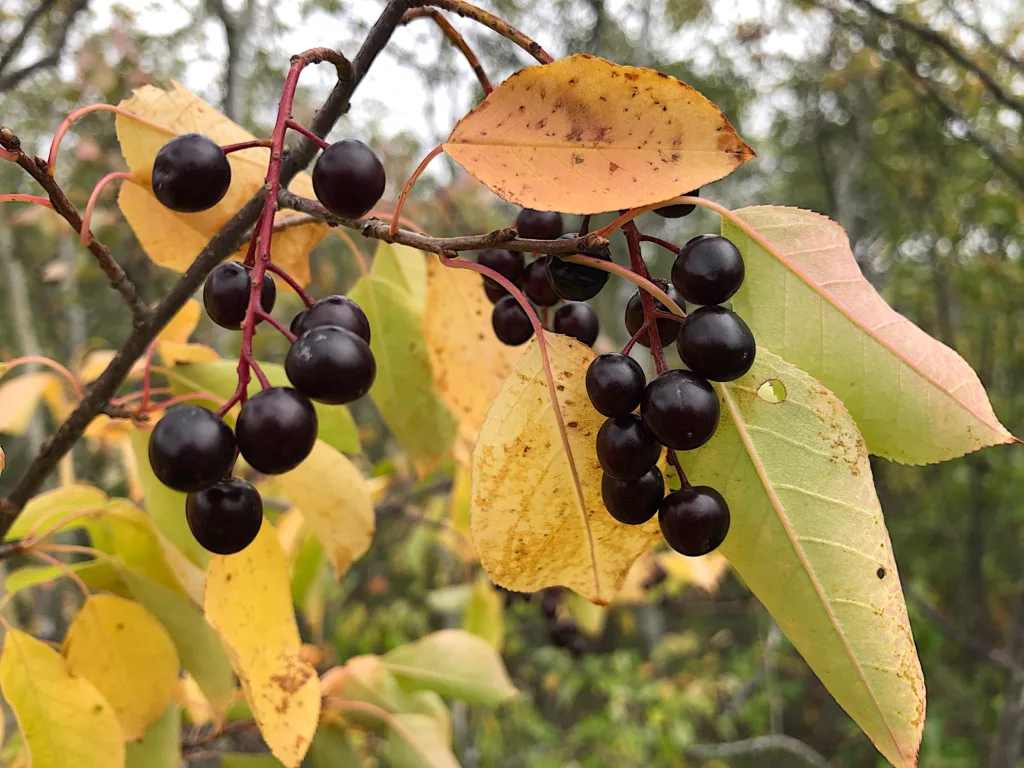
We haven’t intentionally grown chokecherries, but they’re a suitable and edible option for shade.
We’ve had and seen them growing in full sun, partial shade, and moderate or dappled shades.
Since the trees produce small berries, it doesn’t require substantial sunlight for good fruit yields.
If a stone fruit makes you nervous about that shady spot you’re trying to fill, then maybe go with a tree or shrub that produces smaller fruit, like berries. Most of all, chose the most suitable fruit you’ll actually eat and use.
Plum (Prunus domestica) zones 3-8

Our plums are situated similarly to our peaches. They get 3 hours of morning sun and about 3 hours of afternoon sun with dappled light during the heat of the day.
Plums do best will at least 6 hours of sun, but you can get away with 4 hours and still get reasonable fruit.
Pear (Pyrus) zones 3-10
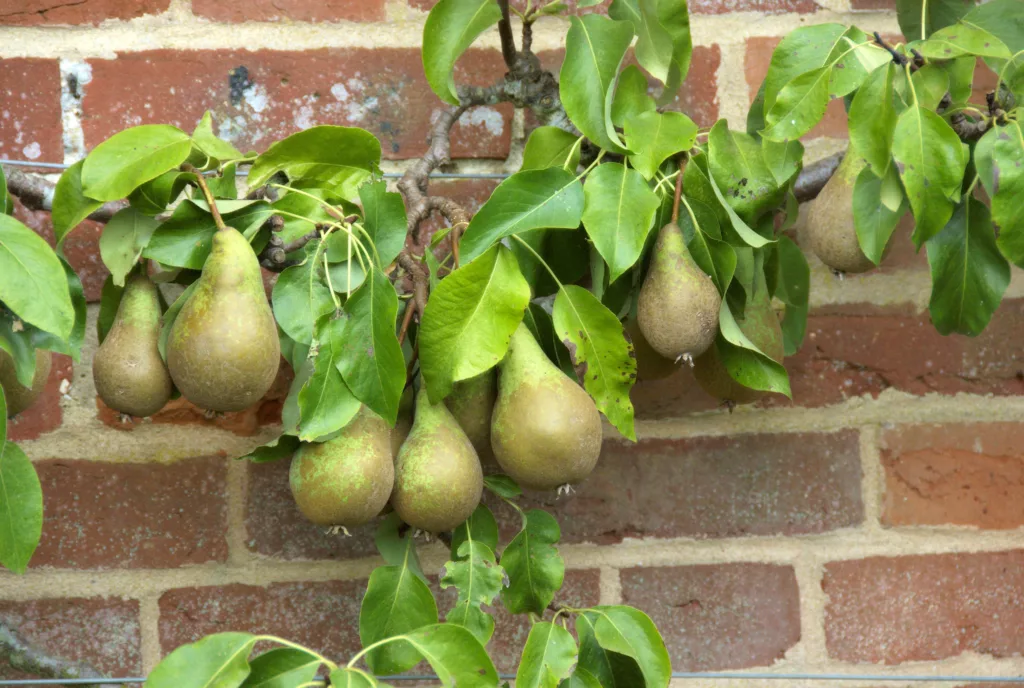
Many fruit tree growers report pear trees as able to tolerate a minimum of 6 hours of sun with good fruit production. If you have a semi-shaded area, this will work! More shade than this, and you’re better off picking any other option.
We planted ours in a full sun spot, but they didn’t survive.
Our pears didn’t survive the full sun area we planted them, but they were also on slopes. So don’t plant a tree on a slope, especially in high-sun areas. Terrace (flatten) your ground so it can absorb water when it comes.
7 Best Shade-Loving Tropical Fruit Trees
If you’re in zone 7 and up, you’ll have shade-loving tropical tree options. Most of them are only suitable for zones 9 and up.
See: 7 Shade-Loving Tropical Fruit Trees
12 Best Fruit Bushes To Grow in Shade
This section is about shade-producing bushes that grow delicious and nutritious fruit. These bushes grow well in moderate, dappled, and partial shades. (The next section has full-shade options!)
These perennials have a bushing habit rather than a trunk like a tree. Perfect for under the canopy of larger trees or spaces you need a shorter plant.
The best fruit bushes for shade are the ones that actually produce fruit when in the shade. What use is a fruitless fruit bush?
So the best fruiting bushes that produce in the shade are:
- Gooseberries
- Currants
- Elderberries
- Hardy kiwi
- Serviceberry
- Alpine strawberry
- Lowbush blueberries
- Lingonberries
- partridgeberries
- Salmonberries
- Thimbleberries
- Blackberries
They all grow at various heights and in different climates. So scroll on to see which are the best fits for you.
Related: 24 Best Edible Ground Covers for Shade
Gooseberries (Ribes uva-crispa) zones 3-8
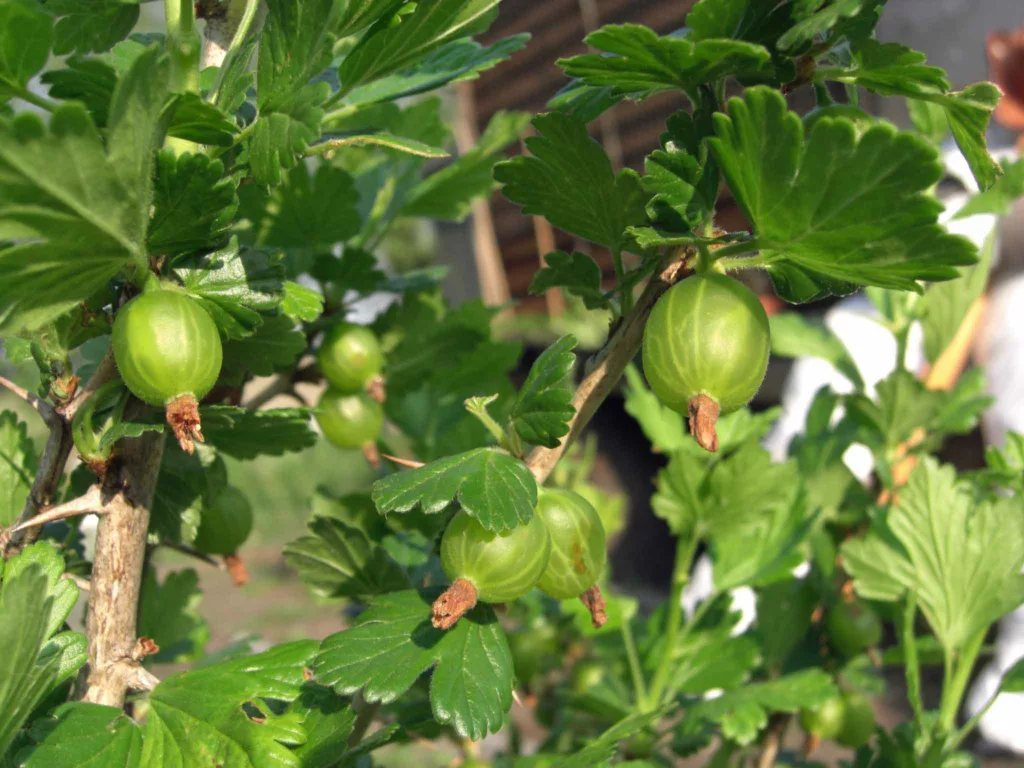
Gooseberries are deciduous shrubs, native to Canada, grow between 2 and 5 feet, and spread of 3-5 feet.
The fruits are described as “acidic grapes.”
Gooseberries have a sweet but tart tropical taste. They aren’t my favorite, but if you love grapes, they are like a shade-tolerant grape.
Currants and gooseberries are very similar—see more information about them both below.
Currants (Ribes) zones 3-8
A publication by Virginia State University talks about site selection for currants and gooseberries. They make the point that while most fruiting shrubs and trees prefer full sun for peak production, these shrubs would benefit from a cooler position.
North and Northeast facing positions stay cooler for longer offering more ideal temperatures for plant growth and adequate winter chilling.
For fruit, provide currants and gooseberries with a position that receives at least 4 hours of direct sun.
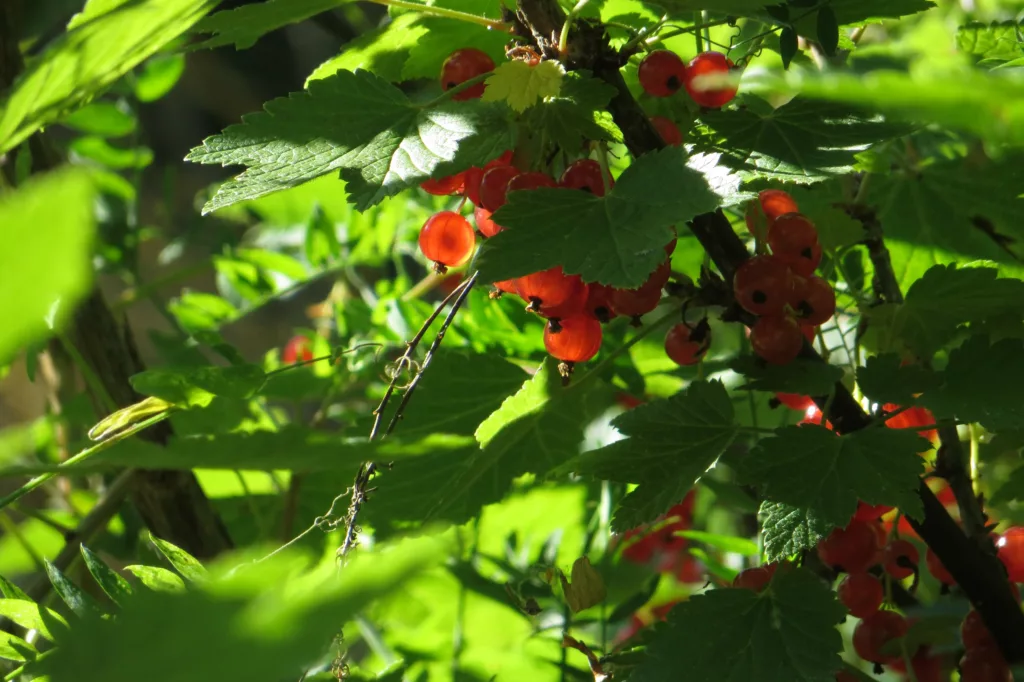
Our currants have no issues fruiting in the shade. The ones in full sun have grown slowly in comparison.
Currants look very similar to gooseberries, just without the spines on the stems.
Our local nurseries collectively agree that currants grow up to 4-6 feet with a 3-foot spread.
Elderberries (Sambucus) zones 3-8

Elderberries are vigorous growers and seem more shade tolerant than is being said.
We planted elderberries under a deciduous canopy, they get 4 hours of direct sun about 2 in the morning and 2 in the evening. The rest of the day is dappled shade and they are growing and fruiting fine!
This study also notes that red elderberry, in particular, flourishes on north-facing slopes—North-facing slopes are shady and moist—they seem to tolerate the shade well and thrive in the moisture. So if you’re concerned about production and shade tolerance but interested in elderberries, choose a Red Elderberry.
Elderberry fruits are highly nutritious and medicinal. Elderberry syrup is a popular preventative for colds, pain, and general well-being.
Elderberry bushes grow 7-14 feet high with a 6-foot spread. They can be pruned and kept smaller.
Hardy kiwi (Actinidia arguta) zones 3-9
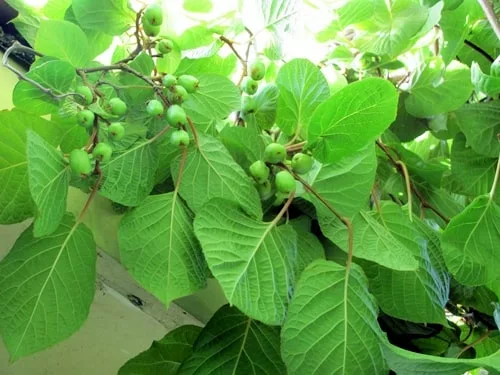
Hardy kiwis are vigorous-growing vines. More sun means more fruit, but you’ll still get fruit in partial shade.
Hardy kiwis are said to be better than regular kiwis! Our hardy kiwis were just planted last year so we have yet to taste the fruit ourselves.
Vines grow 20 feet or more and will need trellising.
Serviceberry (Amelanchier) zones 4-8

Serviceberries, shadbush, saskatoon berries, and juneberries; are all the same under a different name. Native to Eastern North America.
The berries are described as a subtle mix between blueberry, cherry, and grape.
Our serviceberries are about 2 years old now, and we haven’t tasted their fruit yet. We planted them under the semi-shade of a large oak that will eventually come down.
The findings of this study show that shadbush grows in the shade as it’s been found growing on its own in the understory of the Black Rock Forest—a dappled or full shade environment.
Pinelands Nursery not only sells serviceberry bushes but also recommends they be planted in semi-shade to full shade as their preference.
These shrubs grow up to 10-20 feet high.
Alpine strawberry (Fragaria vesca ‘Semperflorens’) zones 4-8

Strawberries, in general, are known as ground covers. Ground covers are usually situated beneath lush canopies, and protected from prolonged direct sun.
Alpine strawberries don’t produce the largest of strawberries. So they demand less direct sun to be productive.
We pick wild alpine strawberries all the time, and they are a real treat! If you’ve never had freshly picked strawberries, you don’t know what a strawberry tastes like. We find them growing and fruiting in full sun and shade.
They grow up to 6-8 inches tall.
Search for seeds from small businesses on Etsy if you can’t find any growing near you!
Lowbush blueberries (Vaccinium angustifolium) zones 3-6
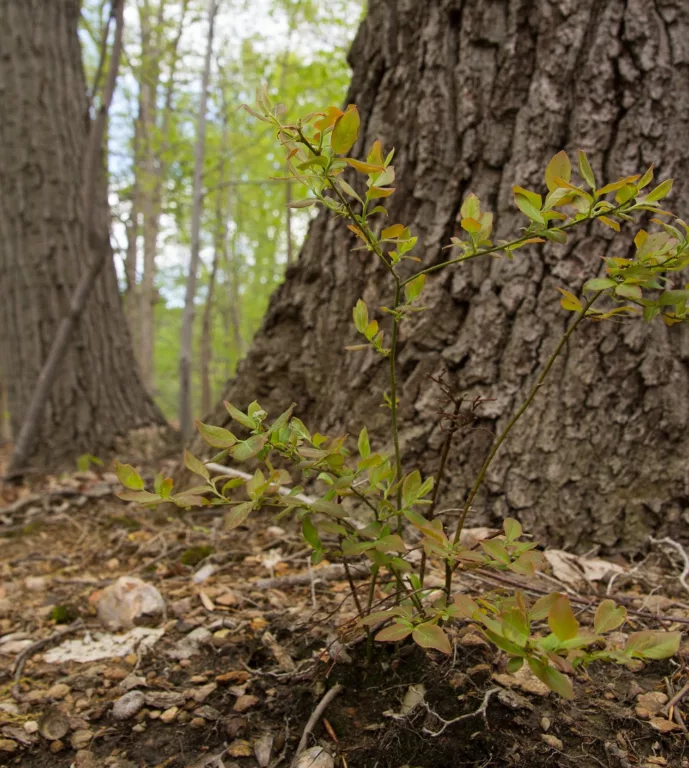
While not ideal for full shade, partial shade is the preference for lowbush blueberries. We see many that grow natively in full shade and they are very small and produce about 3 berries per plant.
Partial shade, a minimum of 4 hours, and an ideal of 6 hours are the right amount of shine and shade for productive lowbush blueberries.
The fruits are your typical blueberry, except homegrown which are more nutrient-dense and delicious!
If you need seeds, they are sold here.
Lingonberries (Vaccinium vitis-idaea) zones 3-9
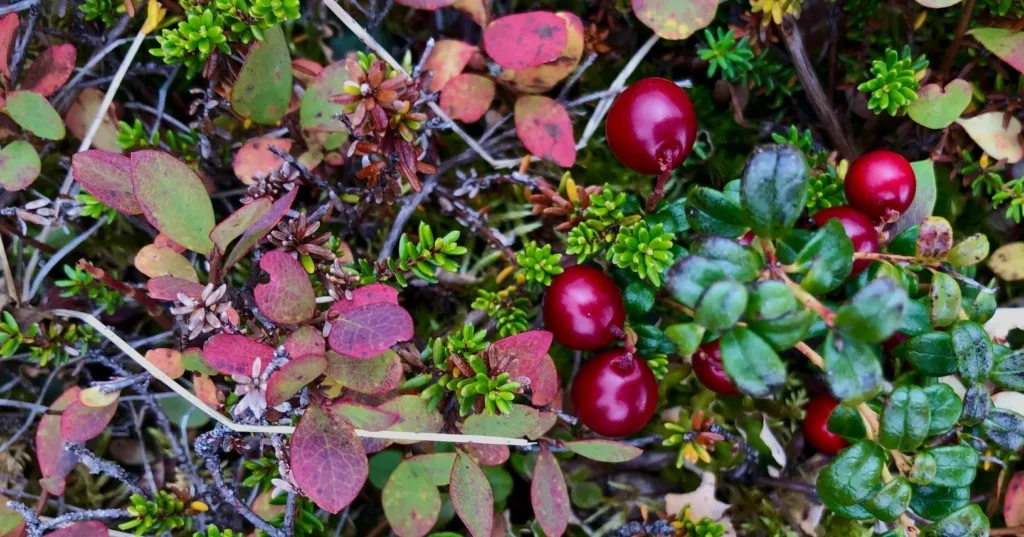
Lingonberries thrive in partial shade as they dislike dry soils. The cool and moist conditions of partial shade are ideal for thriving vegetation, flowering, and fruit production.
Lingonberries prefer acidic soils. Plant near any existing blueberries or conifers, but in a position with at least 4-6 hours of direct sun during any part of the day.
The fruits are like cranberries!
Order from Etsy businesses and grow them from seed.
Partridgeberries (Mitchella repens) zones 4-9
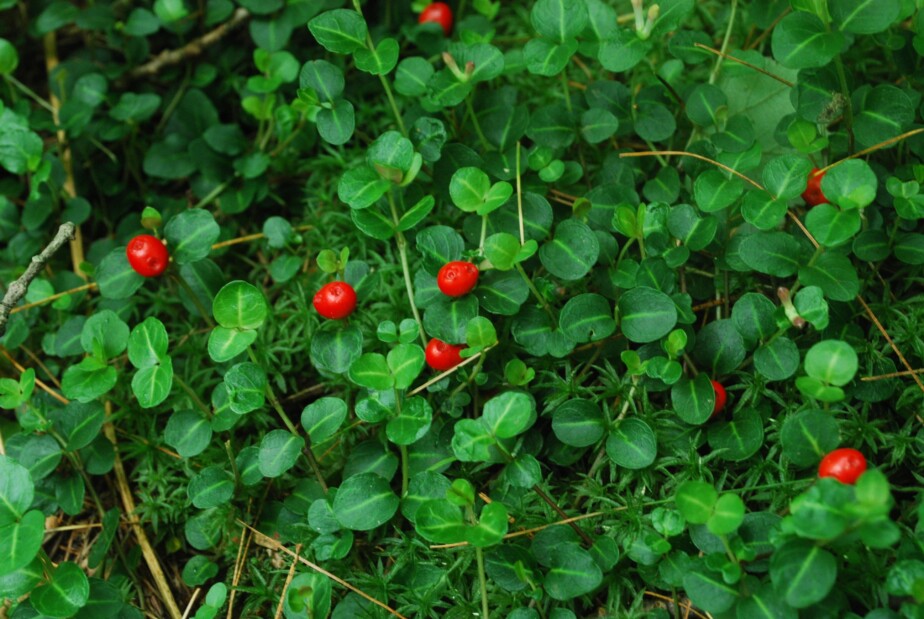
Full shade or dappled sunlight is perfect for partridgeberries. The cute foliage reminds me of Clover.
These little vines are perfect for heavier-shaded areas with acidic soils. Right under conifers or blueberries will do if you’d like to establish a living mulch.
The berries are subtle in flavor and mostly bland. If you want a sweet fruit, this may not be the best choice. But if you have deep shade, it may be the only one that works.
The medicinal qualities of the plant could be a reason to add them to your shaded landscape.
This USA Etsy shop sells bare root partridgeberry cuttings with decent reviews. All the bad reviews state their situation was corrected by the seller!
Salmonberries (Rubus spectabilis) zones 4-9
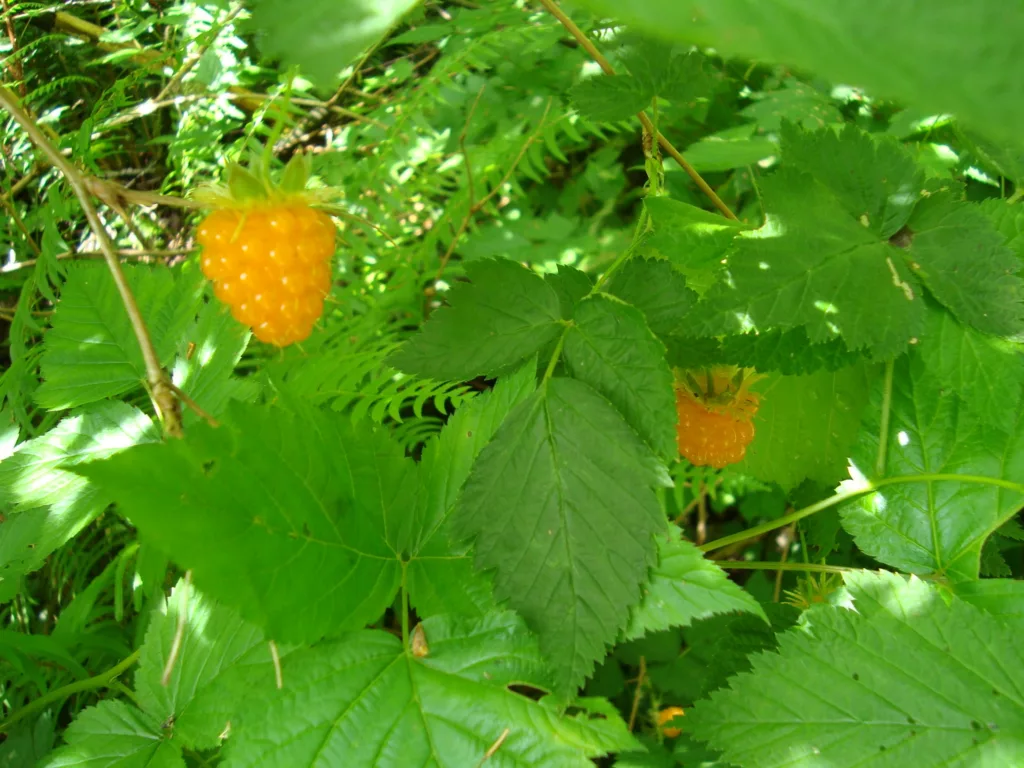
Salmonberries prefer dappled, moderate, or partial shade.
The US Department of Agriculture touches on the shade tolerance of salmonberry plants. It’s been noted that salmonberry bushes grow best in partial or moderate shade. Full shade isn’t enough sun, and full sun is too much.
To learn more about the plant and the taste of the berries I’ll refer you to the Homestead Dreamer’s first-hand experience with salmonberries—they grow best in Northwestern America (I live in the East!)
If these sound delicious and suitable for your shaded spot, seeds can be sourced here!
Thimbleberries (Rubus parviflorus) zones 3-9
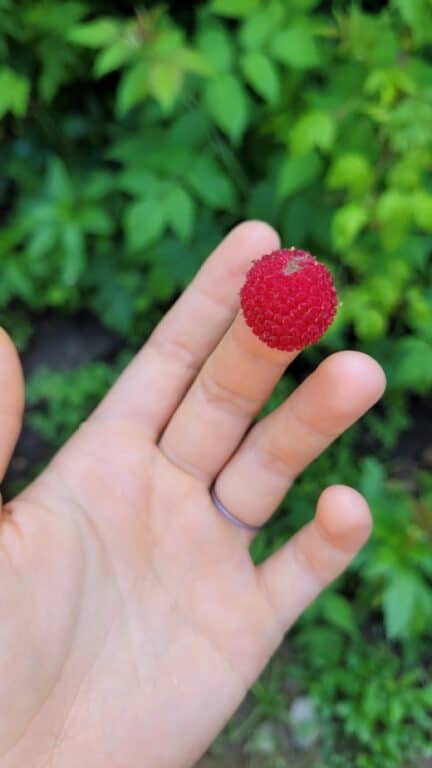
Thimbleberries grow rampantly here in areas with disturbed soil along the edges of undisturbed woodlands. Some grow in full shade and some grow in full sun. Most of them are in partial shade and have the highest fruit production.
They seem to thrive in partial shade as the soil doesn’t tend to dry out too much.
Thimbleberries make amazing jams when mixed with wild raspberries, black raspberries, and blackberries. They don’t keep fresh for long, so it’s best to eat them or freeze them right away.
With frozen thimbleberries add them to a batch of jam or to smoothies throughout the year.
The taste of thimbleberries on their own is very unique!
They have a seedy texture and start out as a bland velvet in the mouth, then they melt into an intense juicy burst with blended notes of raspberry, plum, and blueberry. When the juice is gone it fades back to a mellow musky honey.
Thimbleberry bushes grow from 4-8 feet tall and bout 4-6 feet wide.
If you must, you can get a pack of 50 thimbleberry seeds here.
Blackberry (Rubus fruticosus) zones 5-9
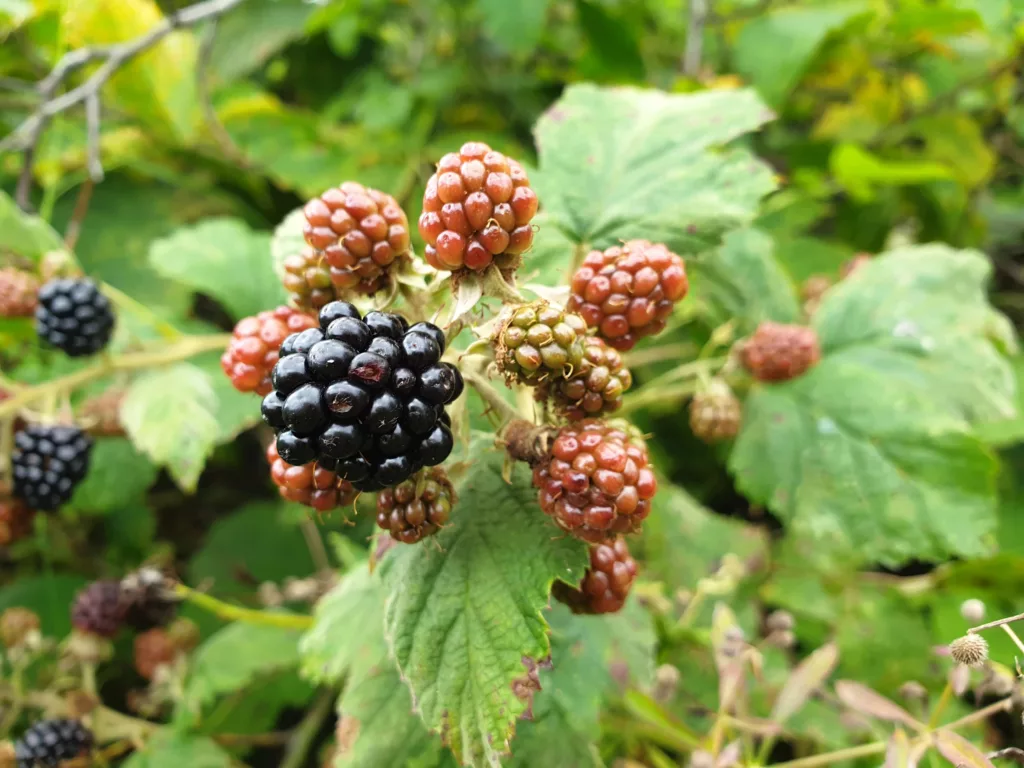
You’ll find the biggest and best blackberries on canes that grow in full sun, but they still produce good yields of fruit in shade, even full shade.
We forage for blackberries every year. A large patch grows in the full shade of a dense hardwood canopy and produces decent fruit.
If you have a shady fence line, I’d choose thornless blackberries or hardy kiwis to grow on it. Otherwise, I’d choose and recommend a more upright shrub.
12 Best Berries to Grow in Full Shade
Full shade seems tricky in the common plant world, but a world of uncommon berry bushes dominates deeply shaded areas!
From communities, connections, forums, and locals, I’ve compiled a comprehensive list of full-shade fruiting plants that produce the most interesting berries.
Everyone will find something to plant in their grow zone.
Only a handful of these grow where I live, but they all grow (and fruit) in full shade!
- Goat nipple
- Oregon grape
- Japanese plum yew
- Box huckleberry
- Hobbleberry
- Snowberry
- Western teaberry
- Eastern teaberry
- emerald carpet raspberry
- Boscia
- Beale’s barberry
- Bearberry
Keep scrolling to see what they all look like and to learn more about each plant.
Goat nipple (Elaeagnus glabra) zones 7-10
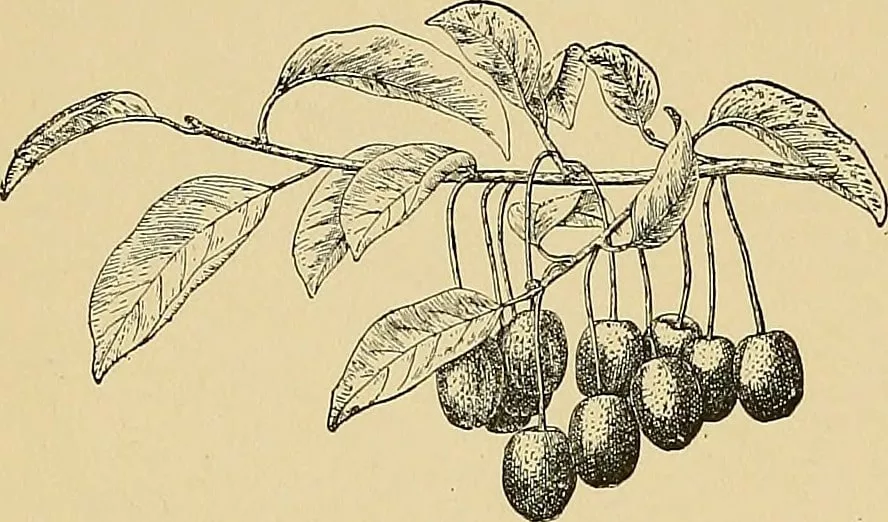
Goat nipple is used as an attractive and edible hedge in Europe and Asia, where it grows natively.
It’s a full-shade tolerant evergreen shrub with fruit that is enjoyed raw or cooked (source).
Oregon grape (Mahonia nervosa) zones 5-9
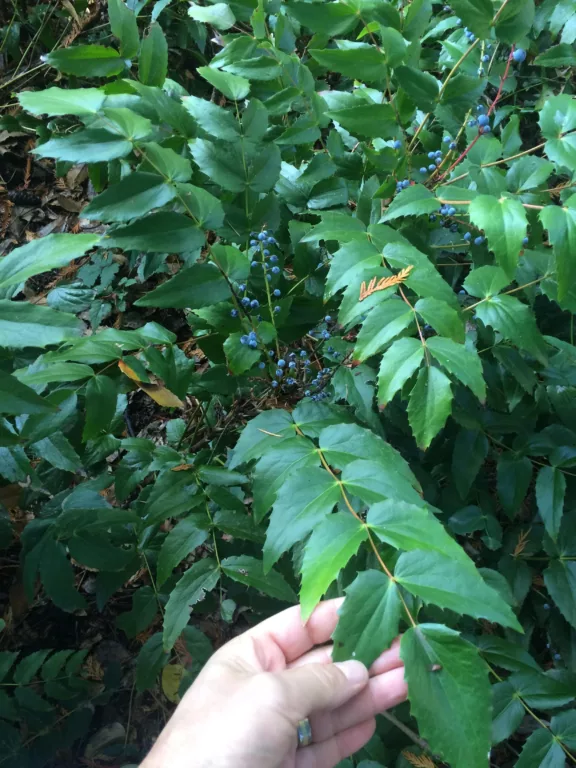
The leaves and fruits are edible on grapes in general, including Oregon grapes. This shrub is often used for ornamental purposes with bright yellow flowers that become blue berries.
This grape loves full sun or full shade. In shade, it blooms and fruits later than when situated in a sunny spot.
If you’re a grape-lover you may be disappointed by the seedyness and lack of juice and sweetness. But it’s also deer-resistant and gorgeous to look at as the foliage in fall turns deep red.
Order deer-resistant shrubs, herbaceous perennials, bulbs, roses, and ground covers all in one place.
With so many other shade-fruiting options, I would recommend this for the volume of fruit and foliage it produces for anyone in Western North America.
Seeds are sold here.
Japanese plum yew (Cephalotaxus harringtonia) zones 6-9
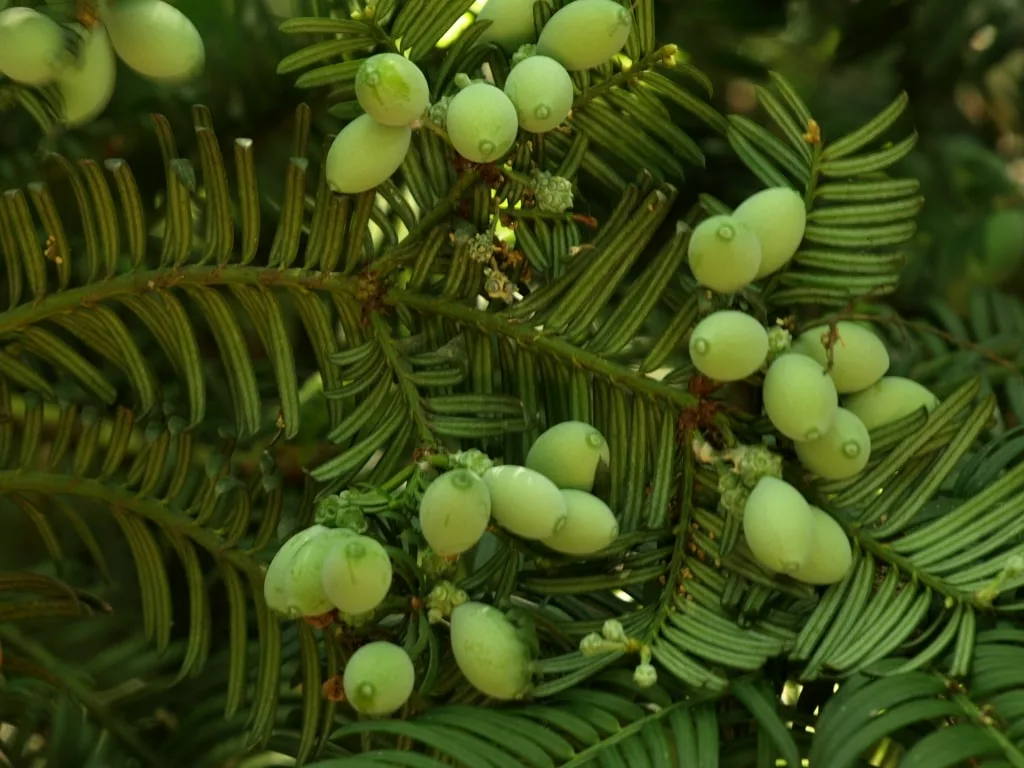
Japanese plum yews often grow in shady places (source).
This deer-resistant plant thrives in partial sun, they are native to shady forests in Asia and grow well in full shade too.
It’s an easy plant to grow, is often used as a hedge, and only needs protection from extreme winds during winter (source).
The fruits are similar to plums but smaller.
This Etsy shop offers 3 cuttings for $20 that you can root.
Box huckleberry (Gaylussacia brachycera) zones 5-9
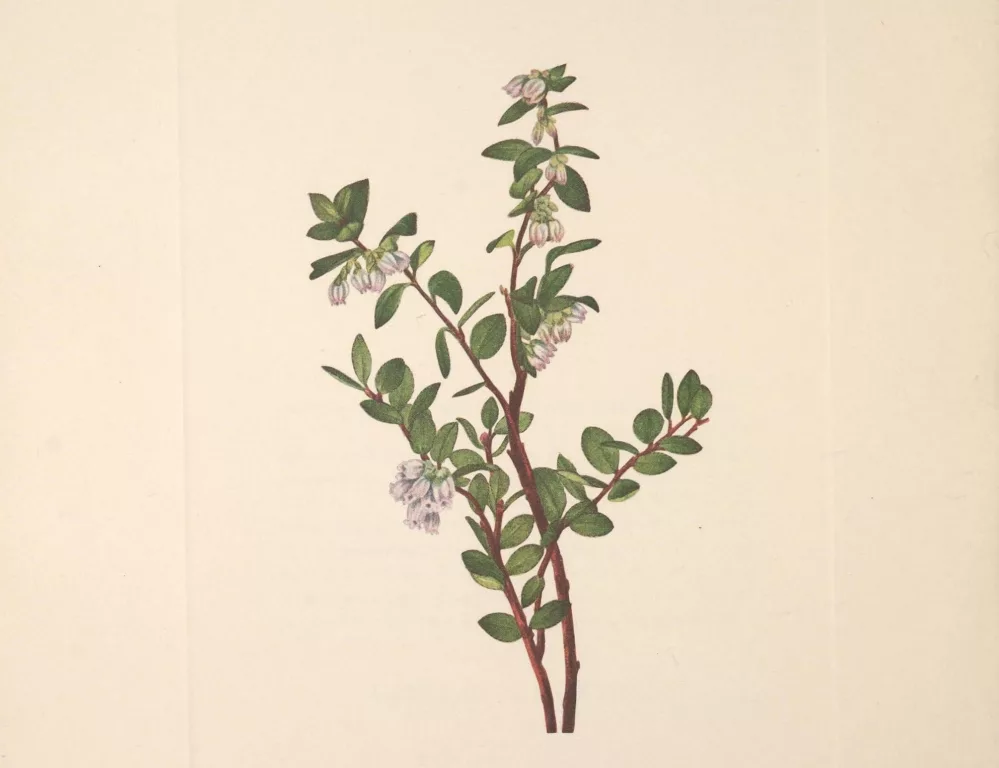
Huckleberry pie, anyone?
For the best fruit, partial shade is ideal, but huckleberries will also grow and produce in moderate, dappled, or full shade, according to the National Gardening Association. More sun, however, means more fruit, as usual.
Huckleberries are better suited for dry shade conditions. Avoid this plant if the spot you have in mind is generally moist, humid, or has standing water during some parts of the year.
The berries look like dark blueberries and have a similar taste.
Seeds and seedlings are available here.
Hobbleberry (Viburnum lantanoides) zones 3-7
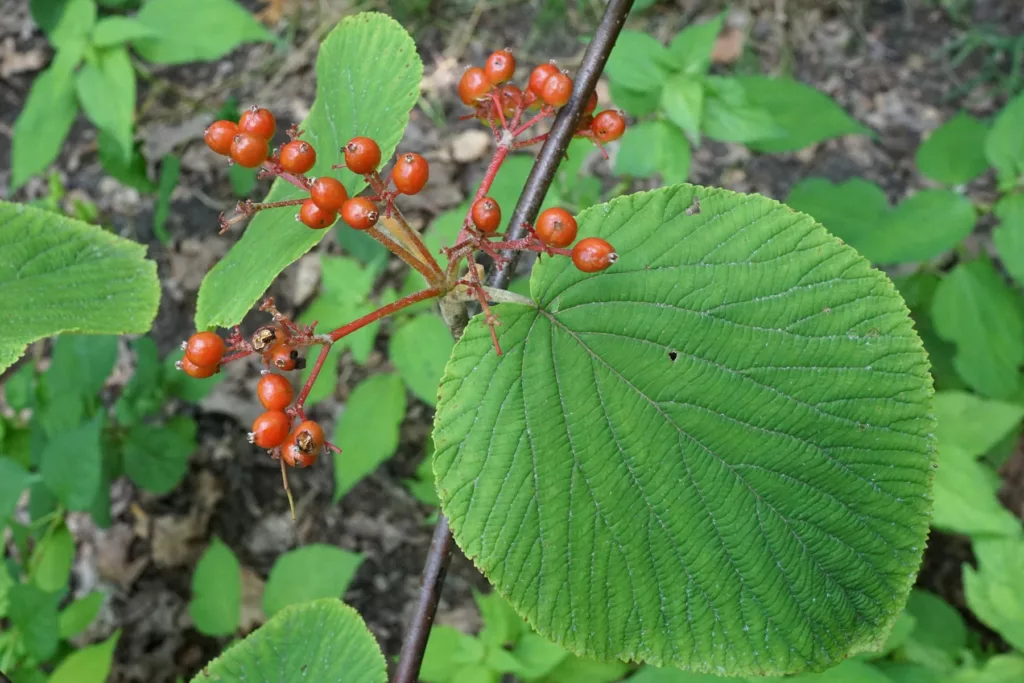
The hobblebush is known as an understory shrub that grows and fruits in partial shade, and full shade.
This shrub hosts pleasant foliage and flowers throughout the season, and in fall edible fruits can be enjoyed.
The berries are best when the weather is cool, and ideal after a fall frost. A small amount of sweet flesh is offered around a large seed.
Snowberry (Gaultheria antipoda) zones 8-11
Snowberries are native and grow best in New Zealand. Photos are offered on the New Zealand Plant Conservation Network website.
This shrub offered cute toothed leaves, bell flowers, and white edible berries. The berries are said to be tasteless.
Eastern teaberry (Gaultheria procumbens) zones 3-6
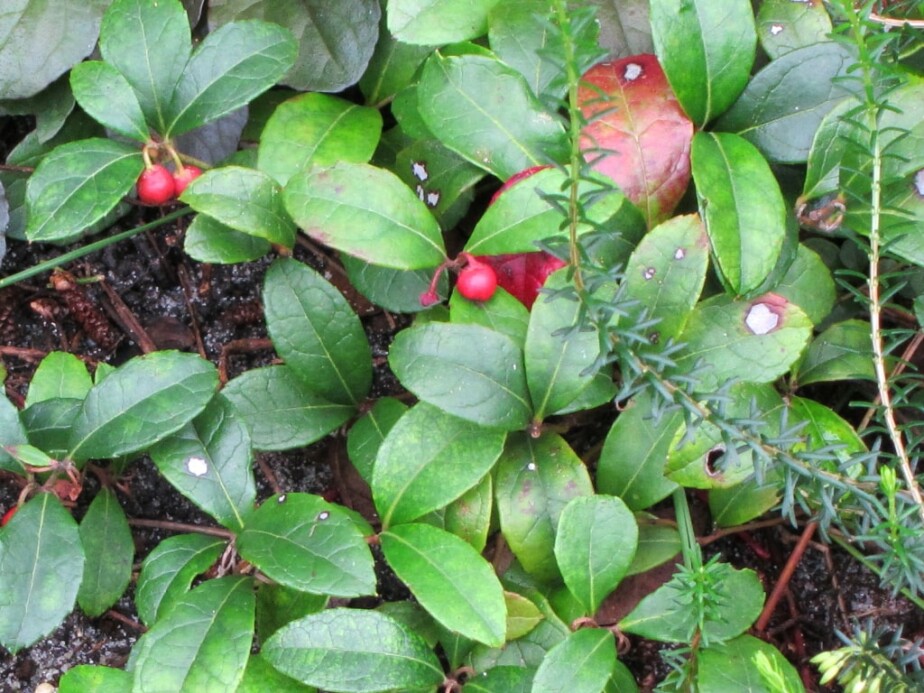
Native to Eastern North America, I can confirm that these berries are as fragrant as chewing wintergreen gum. The flavor, however, is bland and like chewing styrofoam.
These little leaves and berries make a great cup of tea but don’t grow very fast.
They stay around 3 inches in height making a good ground cover over time.
Plant loads of seeds to fill a space.
Western teaberry (Gaultheria ovatifolia) zones 5-9
Western teaberry is very similar to Eastern.
If you live in the West, choose ovatifolia. If you live in the East, choose procumbens.
It’s much easier, however, to find procumbens seeds.
Emerald carpet raspberry (Rubus rolfei) zones 7-9
These are basically orange-colored tropical raspberries! See details and images.
Boscia (Boscia senegalensis) zones 10-12
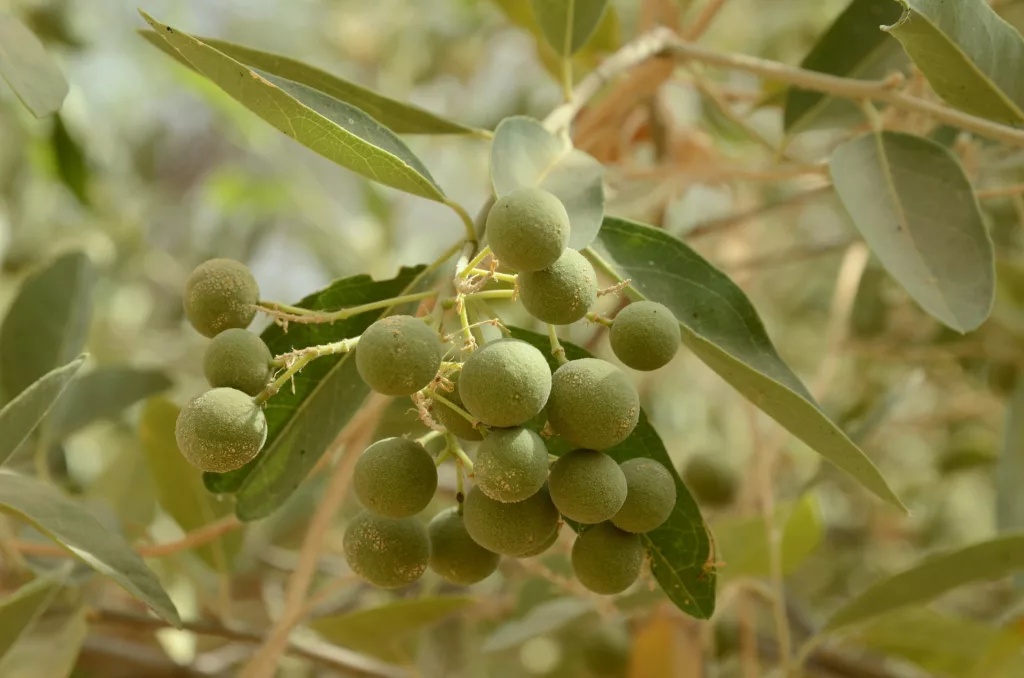
A good note about Boscia fruit is that the seeds are poisonous!
This plant is an interesting and highly useful evergreen that grows in the tropics.
Its uses include but aren’t limited to:
- protecting stored food
- treating water
- windbreaks
- soil protection
- various medicines
- various edibles
If you live in the tropics, you made it far down this post! Read more details here.
Beale’s barberry (Mahonia bealei) zones 5-8
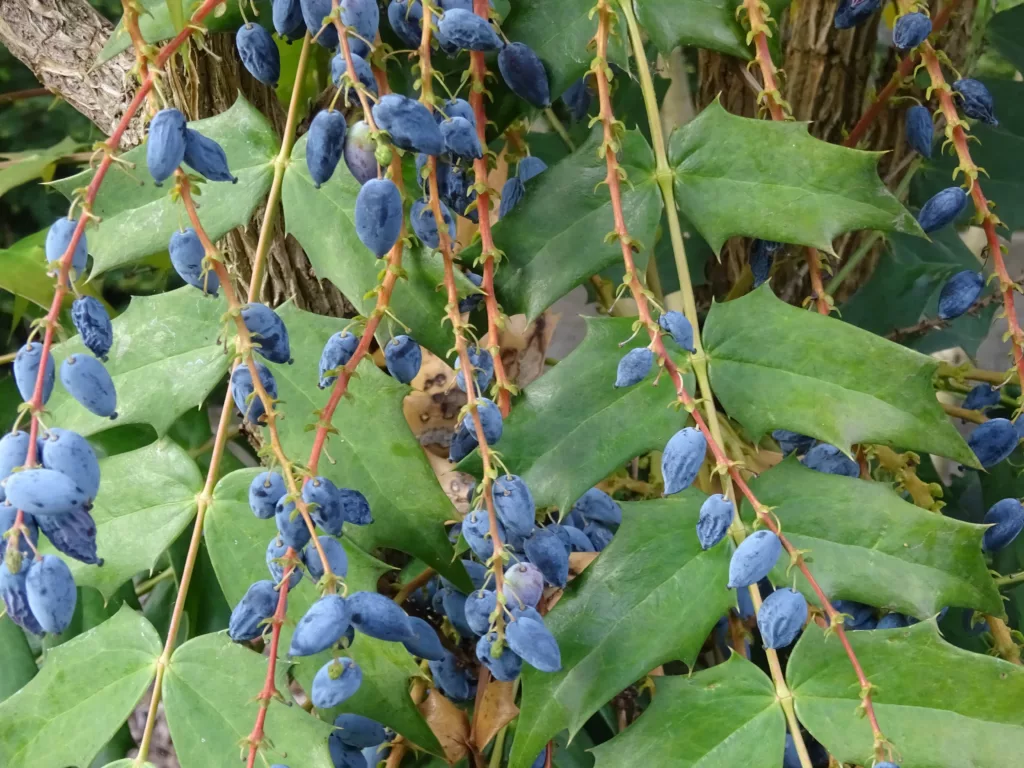
A different “Mahonia” variety. Above we talked about nervosa, and here we talk about bealei.
Beale’s barberry is an upright deer-resistant “Christmas foliage” plant. Grows best in part shade or full shade and blooms bright yellow flowers.
This variety is native to Asia and considered invasive in America. If you live in America, opt for the native nervosa species.
Bearberry (Arctostaphylos uva-ursi) zones 4-8
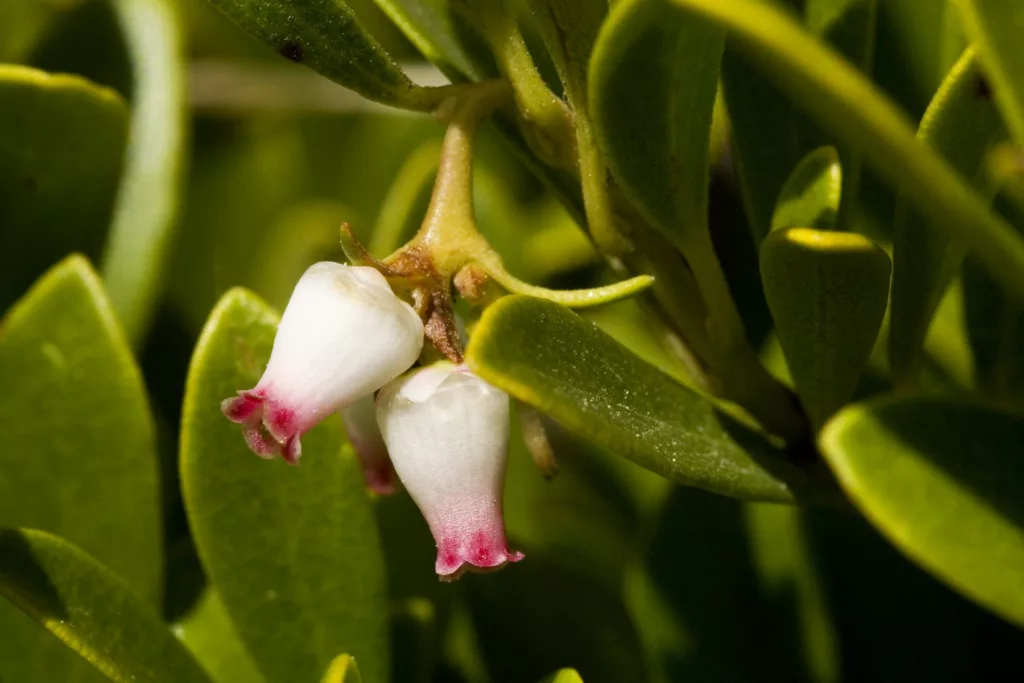
Bearberries are an edible and medicinal low-growing ground cover. This cute plant stays around 6-12 inches tall and is used for plenty of purposes.
It’s a slow-growing evergreen native to North America. Enjoyed heavily by wildlife and is also edible for humans but not usually cultivated for its fruit. While the fruits are flavorless the plant is highly medicinal.
They grow in partial shade, moderate shade, and dappled shade.
Up next: Best Perennial Vegetables To Grow in Shade Complete List
Recent Posts
There’s no shortage of full-sun ground covers for zone 4 climates! Each plant in this list can withstand the frigid temperatures and also enjoy the hot sun in summer. Full sun means that a plant...
There's no shortage of full sun ground covers, not even in zone 3! Zone 3 climates offer hot but short-lived summers and very cold winters. So each plant in this list can withstand the frigid...
